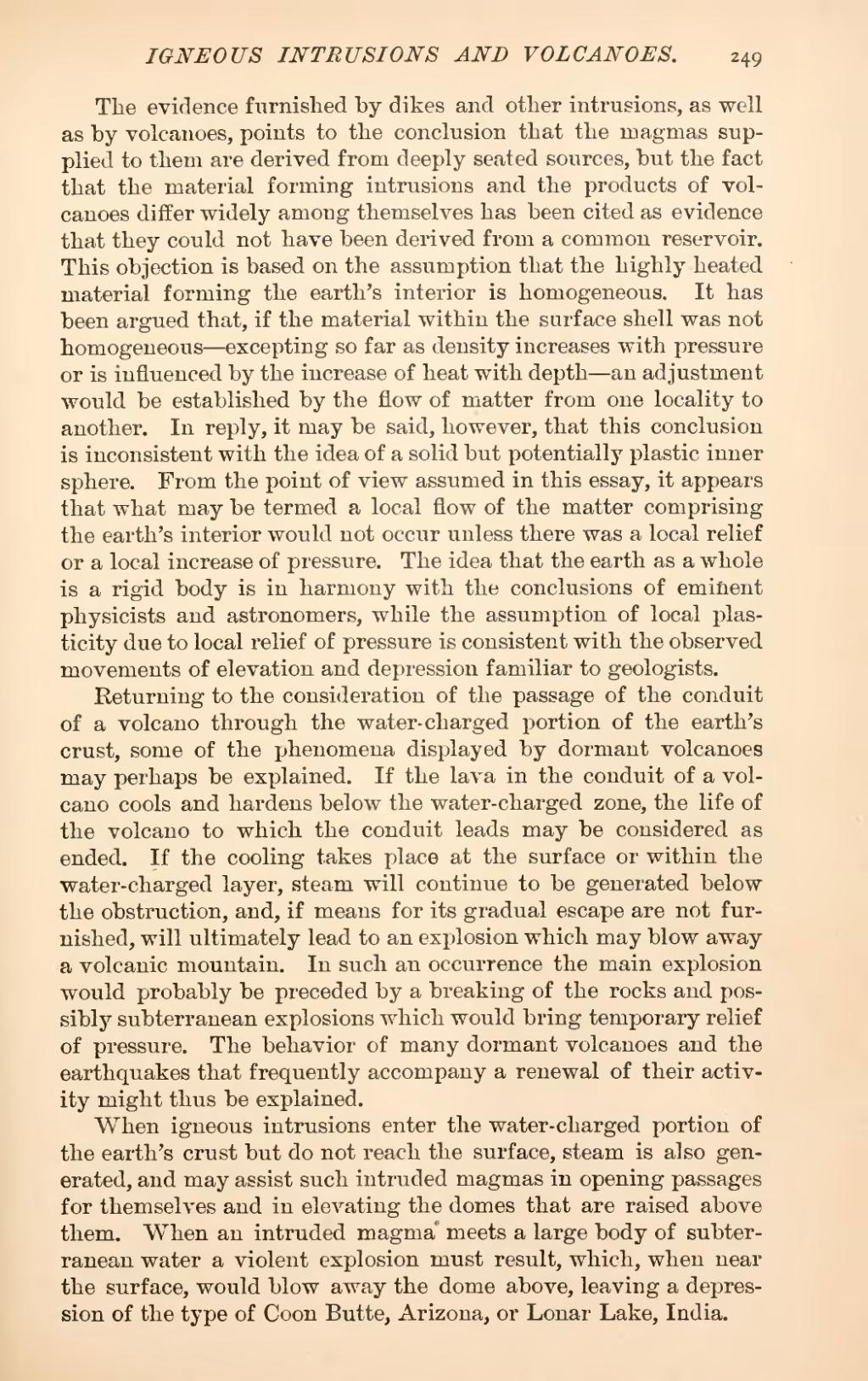The evidence furnished by dikes and other intrusions, as well as by volcanoes, points to the conclusion that the magmas supplied to them are derived from deeply seated sources, but the fact that the material forming intrusions and the products of volcanoes differ widely among themselves has been cited as evidence that they could not have been derived from a common reservoir. This objection is based on the assumption that the highly heated material forming the earth's interior is homogeneous. It has been argued that, if the material within the surface shell was not homogeneous—excepting so far as density increases with pressure or is influenced by the increase of heat with depth—an adjustment would be established by the flow of matter from one locality to another. In reply, it may be said, however, that this conclusion is inconsistent with the idea of a solid but potentially plastic inner sphere. From the point of view assumed in this essay, it appears that what may be termed a local flow of the matter comprising the earth's interior would not occur unless there was a local relief or a local increase of pressure. The idea that the earth as a whole is a rigid body is in harmony with the conclusions of eminent physicists and astronomers, while the assumption of local plasticity due to local relief of pressure is consistent with the observed movements of elevation and depression familiar to geologists.
Returning to the consideration of the passage of the conduit of a volcano through the water-charged portion of the earth's crust, some of the phenomena displayed by dormant volcanoes may perhaps be explained. If the lava in the conduit of a volcano cools and hardens below the water-charged zone, the life of the volcano to which the conduit leads may be considered as ended. If the cooling takes place at the surface or within the water-charged layer, steam will continue to be generated below the obstruction, and, if means for its gradual escape are not furnished, will ultimately lead to an explosion which may blow away a volcanic mountain. In such an occurrence the main explosion would probably be preceded by a breaking of the rocks and possibly subterranean explosions which would bring temporary relief of pressure. The behavior of many dormant volcanoes and the earthquakes that frequently accompany a renewal of their activity might thus be explained.
When igneous intrusions enter the water-charged portion of the earth's crust but do not reach the surface, steam is also generated, and may assist such intruded magmas in opening passages for themselves and in elevating the domes that are raised above them. When an intruded magma' meets a large body of subterranean water a violent explosion must result, which, when near the surface, would blow away the dome above, leaving a depression of the type of Coon Butte, Arizona, or Lonar Lake, India.

